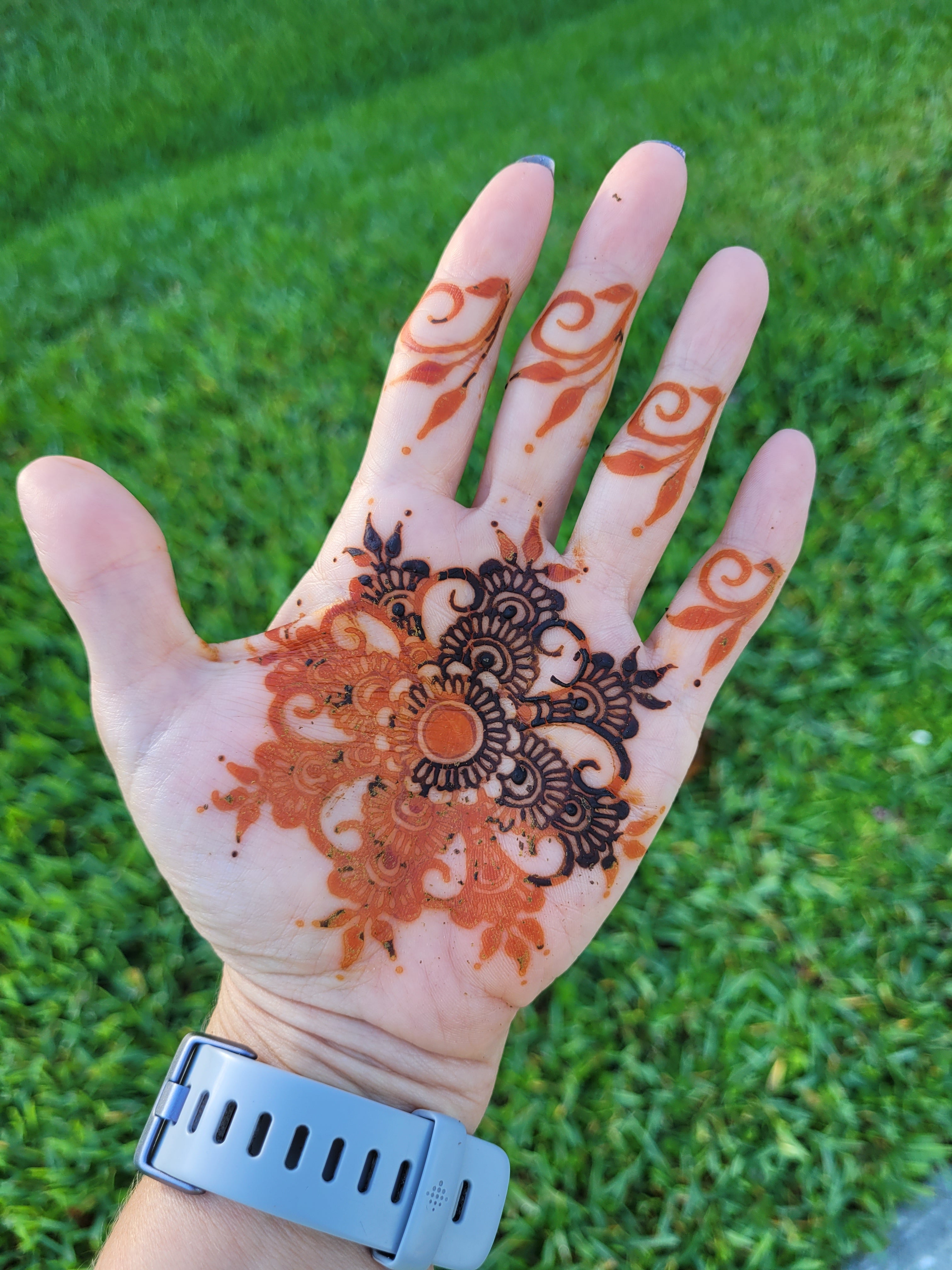
Henna Help: Troubleshooting
Did something go wrong? Find help here! Although henna is generally pretty easy, like any new skill, there's a learning process involved. Often, any difficulties encountered with henna can be easily resolved with practice and patience. The following are common challenges faced by novice henna artists.
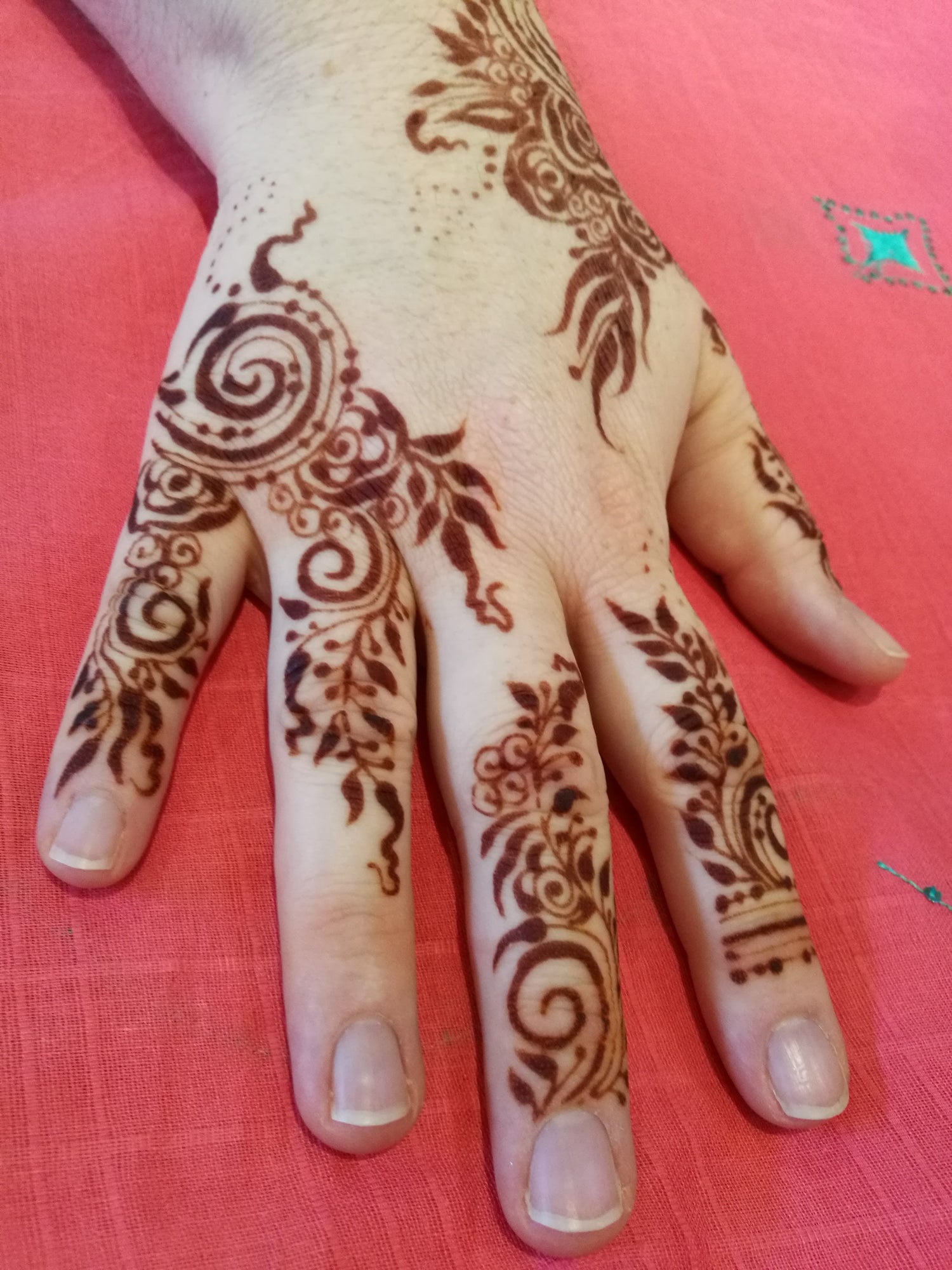
I'm Not Getting a Good Stain.
There are so many factors in getting a good henna stain, that it's easy to overlook something. These are the most common reasons for light henna color.
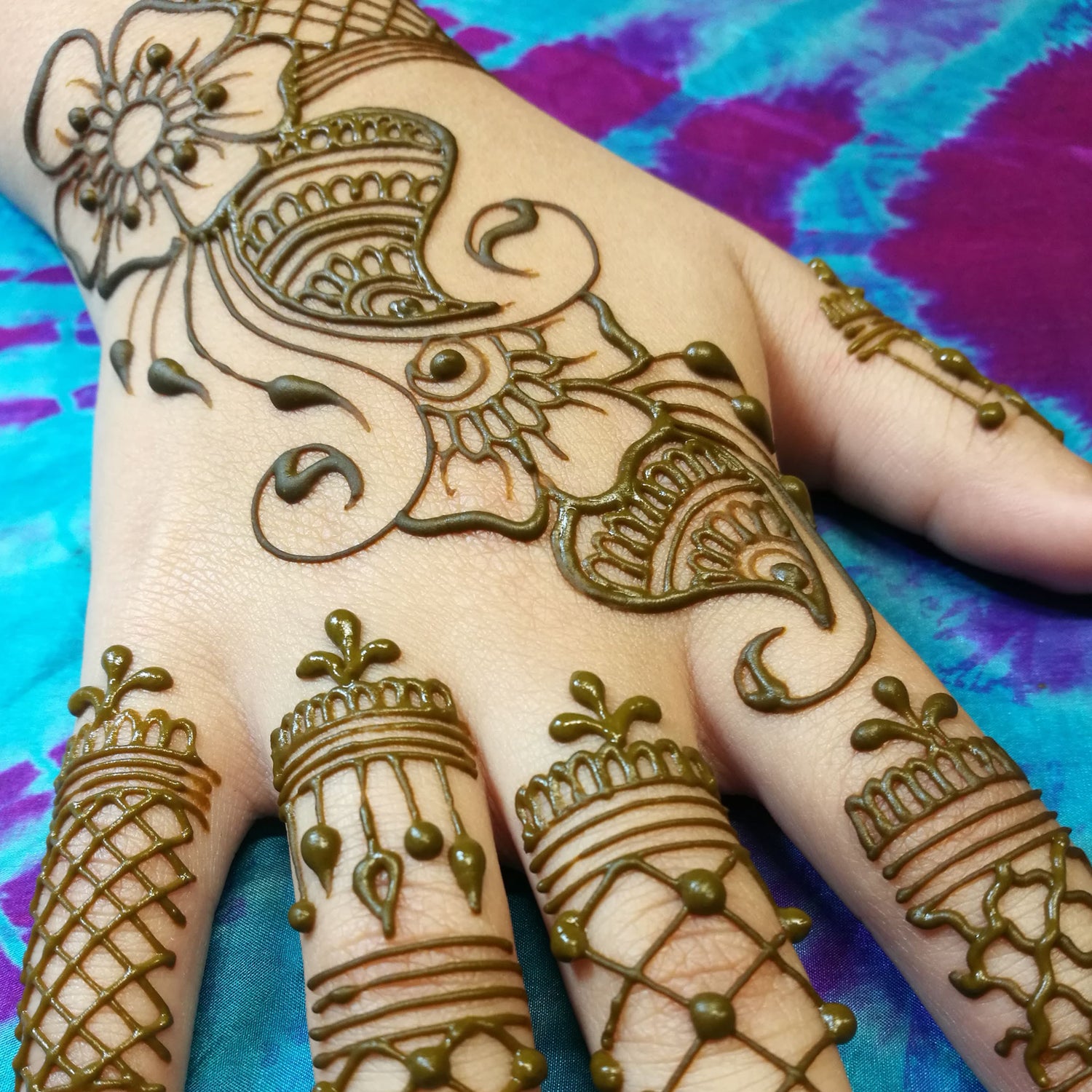
My Henna Paste is Cracking and Falling Off
Henna naturally flakes and falls off, but if henna paste flakes off too quickly, you will not get a good long lasting stain. There are a few easy ways to combat this problem.
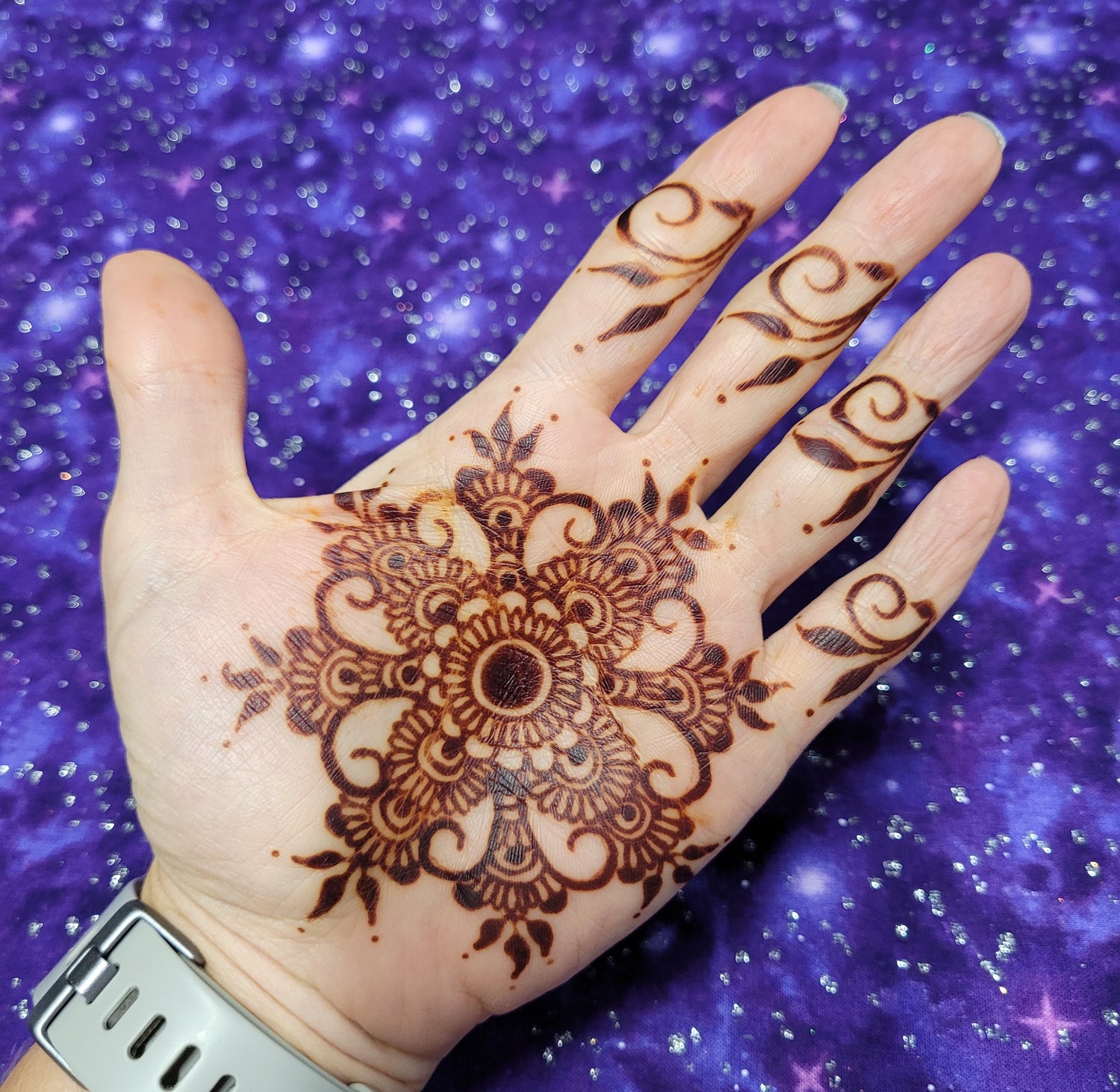
My Henna Stain is Fading Quickly
Henna is a permanent stain. While the henna itself doesn't fade, the natural exfoliating of the skin cells causes the henna design to gradually fade away. To get good long lasting stain we need to ensure many layers of skin are stained and that they are not exfoliated away.
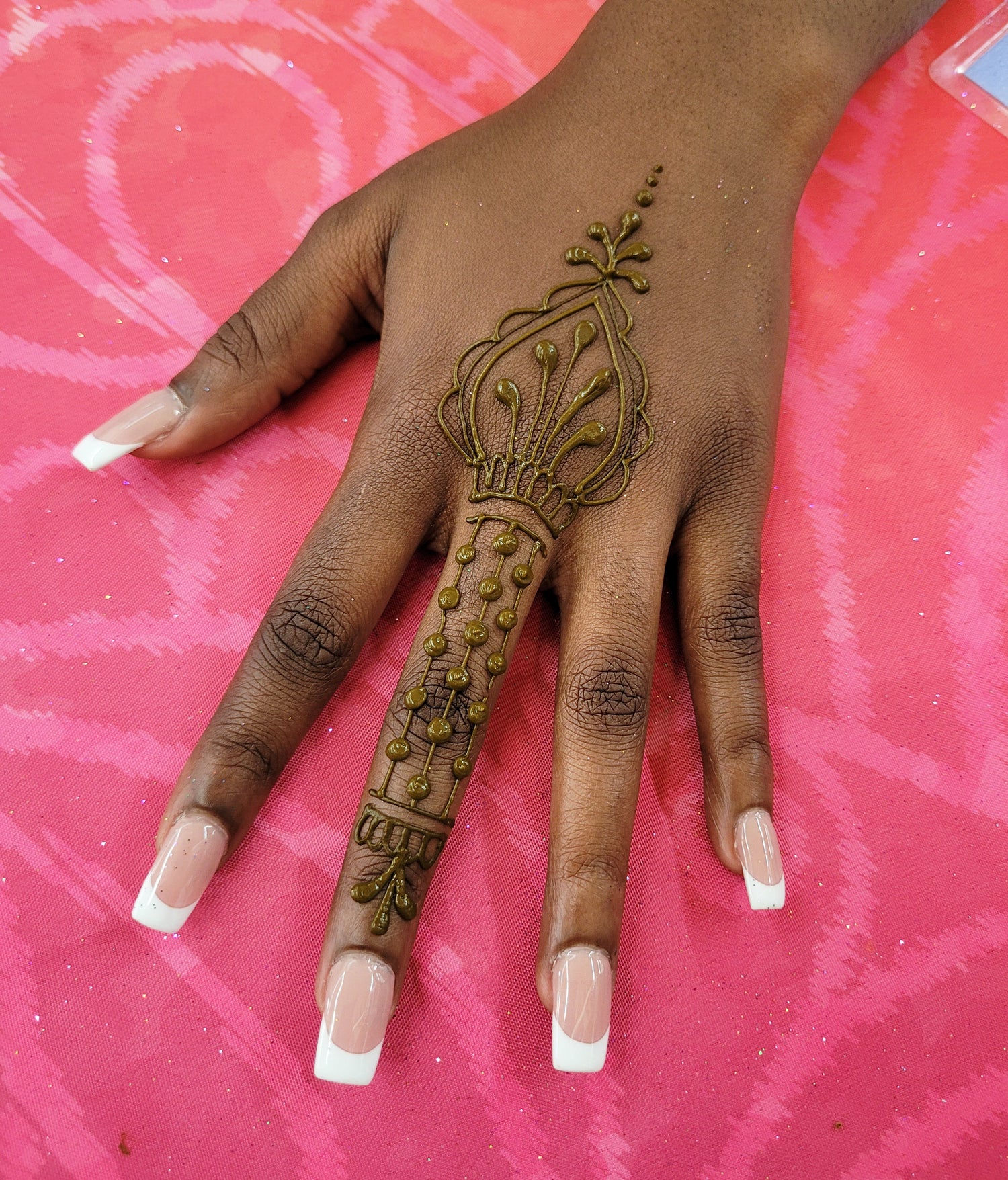
My Henna Paste is Too Thick or Thin
Is your henna always too thick or too thin? If you're experiencing difficulty achieving the correct consistency for your henna paste, these guidelines and tips will help.
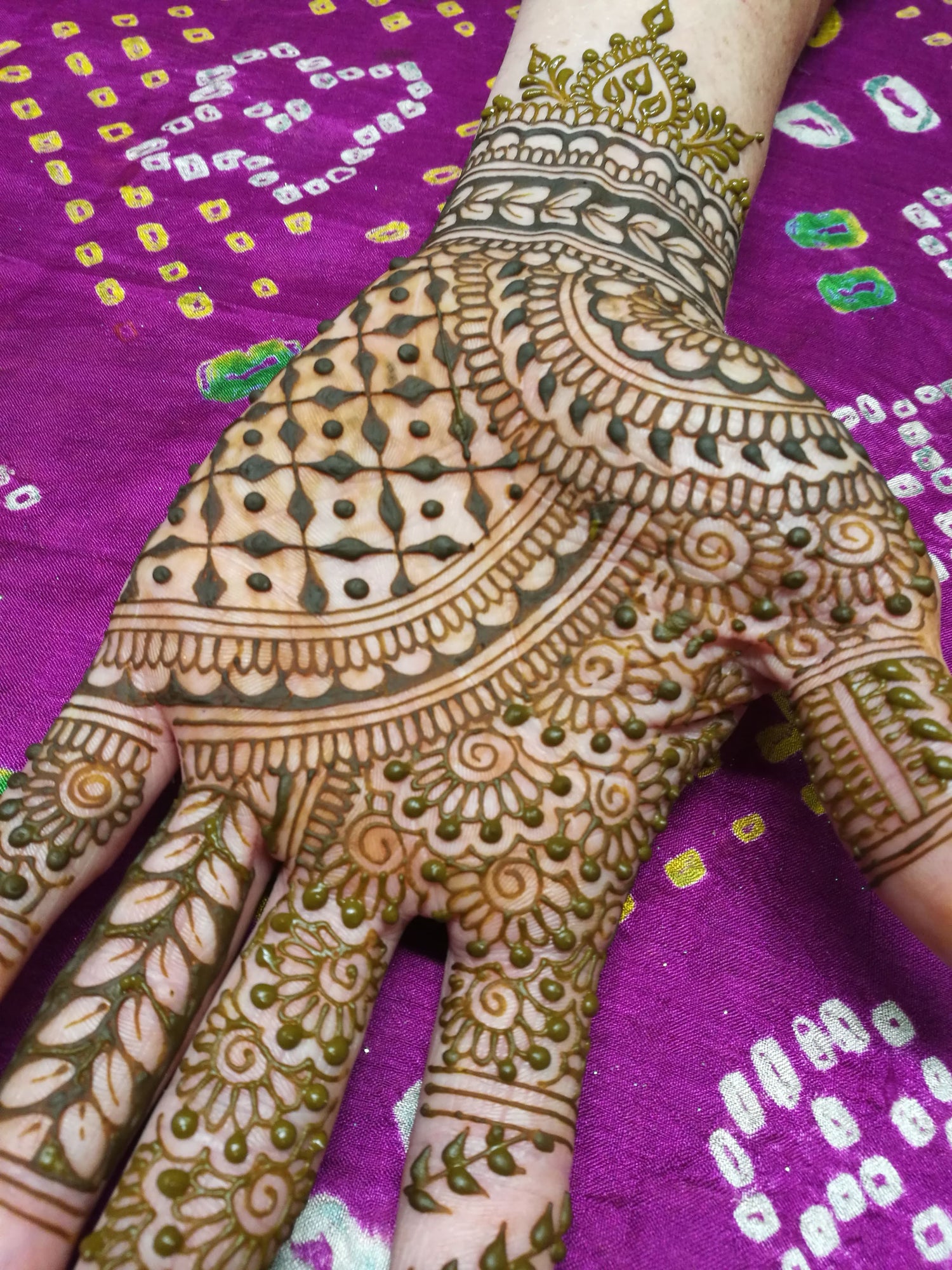
Henna Texture is Too Stringy or Not Stringy Enough.
Experiencing broken henna lines or poor draping? Do you find your henna too sticky or snotty? Follow these tips to achieve the ideal henna texture for your needs.
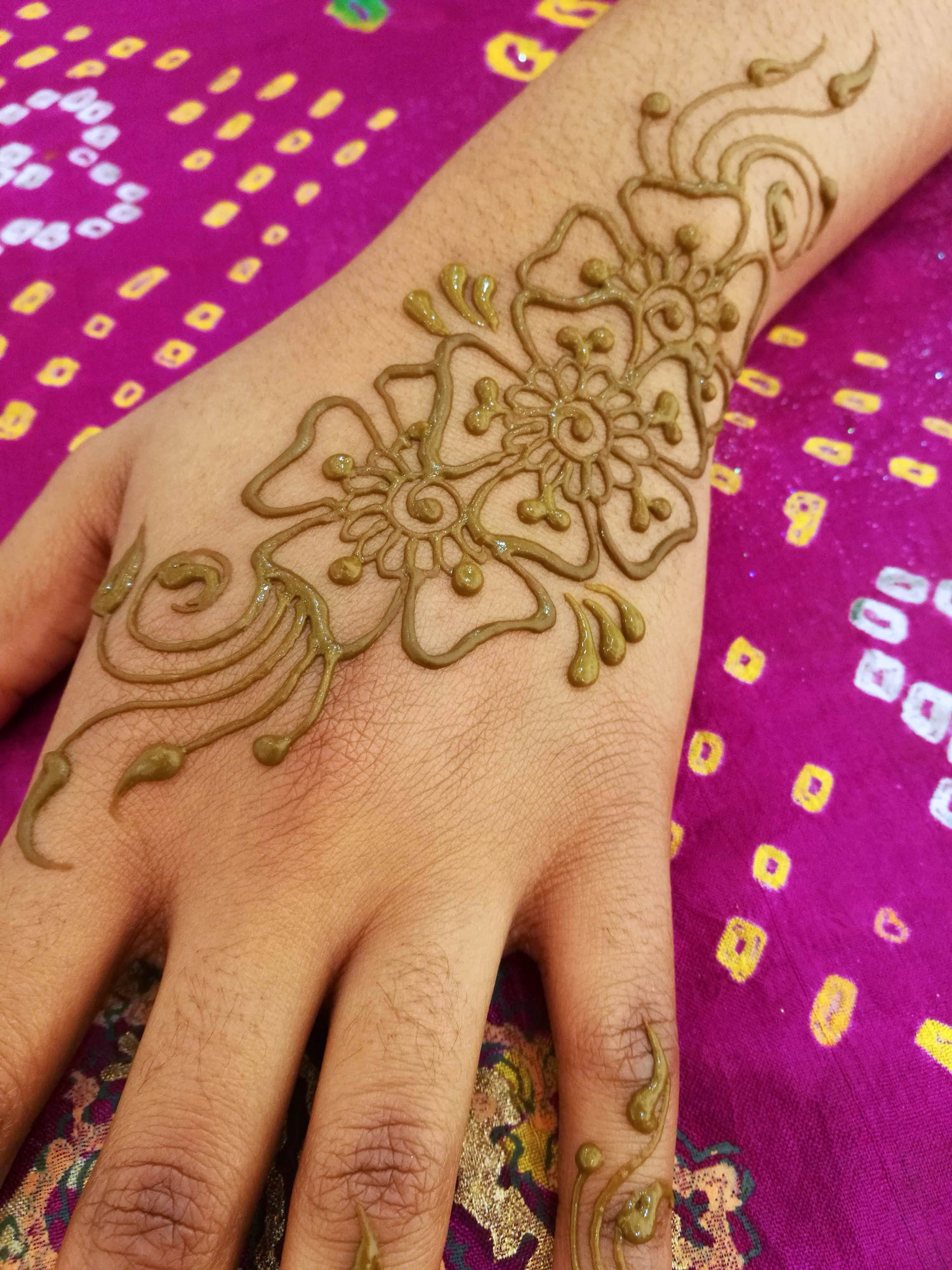
My Henna is Separating.
Henna separation can lead to uneven and thick spots in your cone, causing frustration during application. Factors like freezing, storage, and shipping can contribute to this issue. Luckily, there are easy fixes for this!
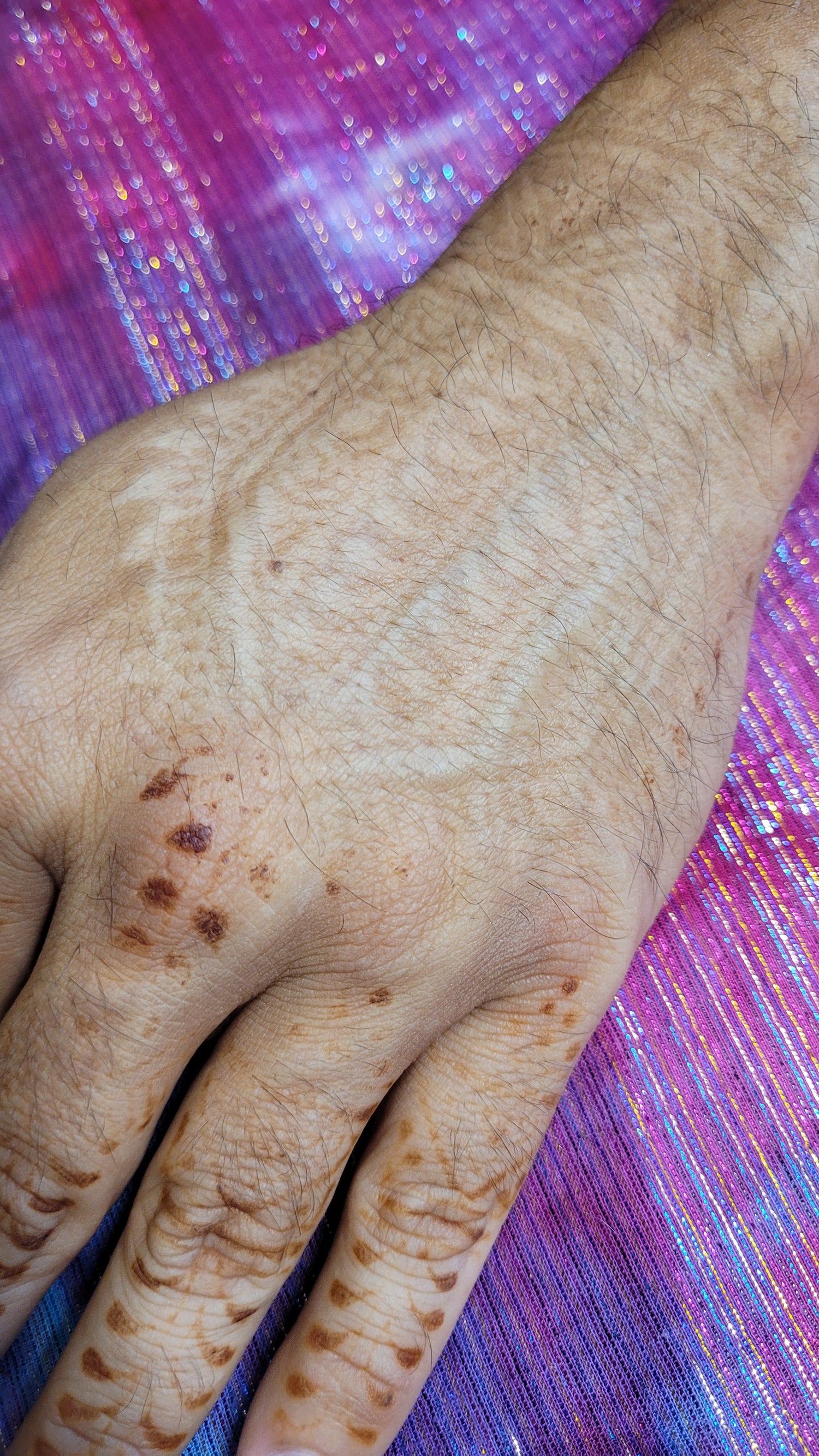
I'm Having a Reaction to Henna
Reactions to natural henna are rare but possible, with nearly all reactions attributed to the essential oils used in henna rather than the henna itself. There are two recognized disorders associated with adverse reactions to henna.
This picture is of a reverse henna not an adverse reaction to henna. This is
what happens when you have a henna stain then you get a tan. Henna acts as a natural sun block so when your design fades you get this fun reverse henna design!
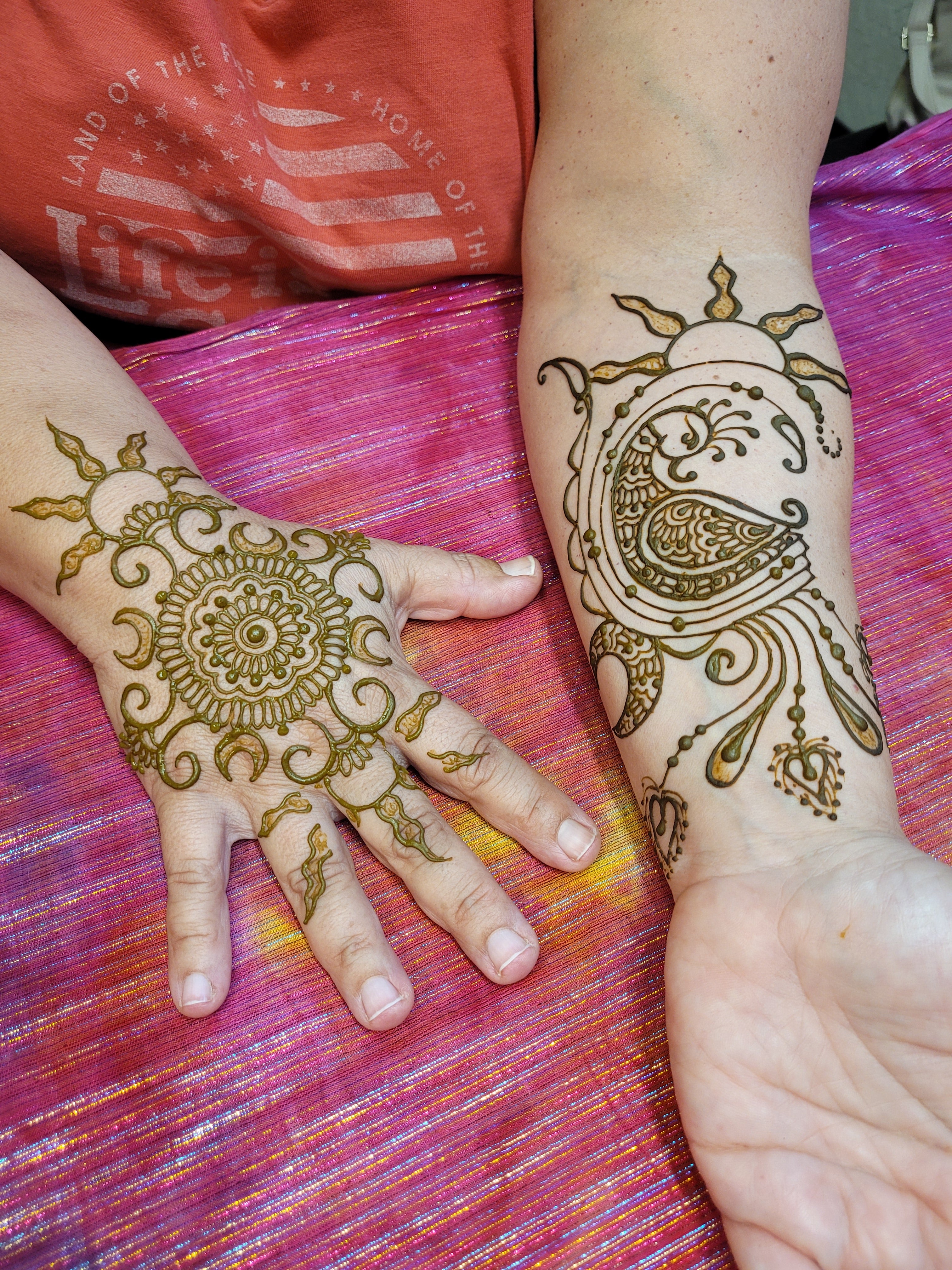
Henna is for Everyone!
We all deserve to feel beautiful and powerful!
